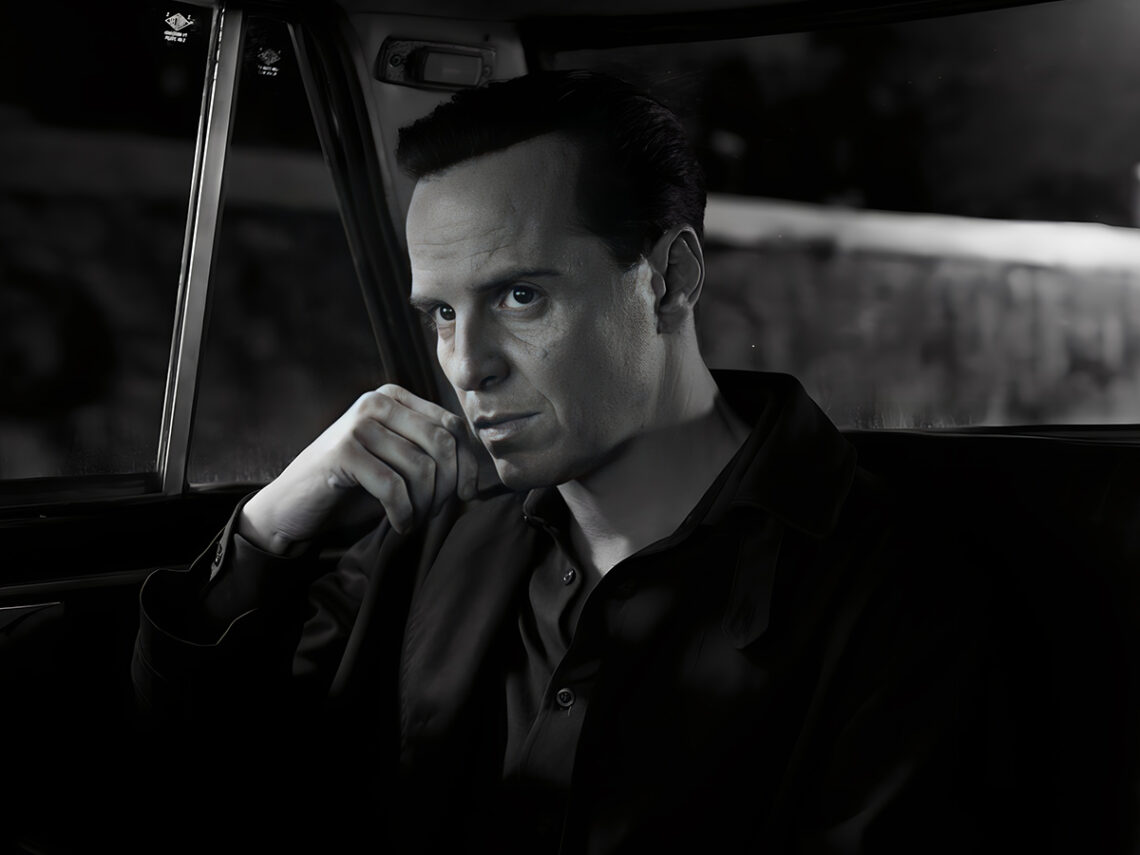In the final episodes of Steven Zaillian’s Ripley, Andrew Scott’s reticent conman and killer Tom Ripley gets struck by a moment of ingenious inspiration to escape the long arms of the law one last time. When Inspector Ravini, whom Tom met earlier in Rome while pretending to be Dickie Greenleaf, decides to visit the “real” Tom Ripley, he goes a step beyond wearing a disguise.
Remembering one of his many museum visits to admire Caravaggio’s work, Tom realises that lighting up his face like a chiaroscuro work of art will be the perfect way to pull off his ruse. After all, he sees his life’s work as nothing short of art. In a world created with meticulous attention to detail, the lines between art and reality blur finally when the echoes of Caravaggio’s dark genius reverberate through Tom Ripley’s final cons.
In this adaptation, Tom’s fascination with Caravaggio becomes a central theme, weaving a narrative thread that ultimately foreshadows his downfall. It’s Dickie (Johnny Flynn), his affluent and charismatic friend by a random stroke of fate, who introduces Tom to Caravaggio.
Caravaggio’s paintings are rife with memento moris, reminders of mortality and the transience of life. Perhaps none encapsulates this more than ‘The Seven Works of Mercy’, the first masterpiece Caravaggio painted since he killed a man and fled to Rome. This serves as a harbinger of Tom’s fate.
Tom Ripley’s obsession with Caravaggio
Tom dots his descent with more homages to the painter who died under mysterious circumstances, possibly murdered by unknown assailants. When he kills Freddie Miles (Eliot Sumner), there is a moment where he grabs Freddie’s head in a direct imitation of Caravaggio’s ‘David with the Head of Goliath’.
Zaillian’s decision to juxtapose Tom’s story with Caravaggio’s was deliberate. Both men are driven by a relentless pursuit of beauty and perfection, yet find themselves trapped in a cycle of violence and deception. “Caravaggio is another man who lived in Rome who murdered somebody and then was on the run for it for the rest of his life,” Zaillian tells Tudum. “That little parallel I thought was interesting.”
Dickie’s own artistic aspirations serve as a stark contrast to Caravaggio’s genius and what Tom assumes to be his own. While Dickie is privileged, his paintings are little more than vanity projects. Through Tom’s eyes, we see the emptiness of Dickie’s world, a hollow existence built by self-delusion that is afforded by the security of generational wealth.
The final episode of Ripley starts 350 years ago. We meet a young Caravaggio who has just murdered the man who would go down the annals of history for no other achievement but the fact he died at the hands of a Baroque god. The episode begins with Ranuccio Tomassoni’s dead body on the steps of Rome. But in the closing montage, Zaillian draws a poignant parallel that brings Tom’s story full circle. We see Inspector Ravini finally realise Tom was pretending to be Dickie all along. Then we see Tom finally get his hands on Dickie’s prized Picasso, and thus we see Tom’s true self, reflected in the cubist scape: fragmented and dissonant.
In the end, no matter how far Tom runs, he can never escape the shadows of his own making.
You can watch Ripley on Netflix and check out the trailer here:
